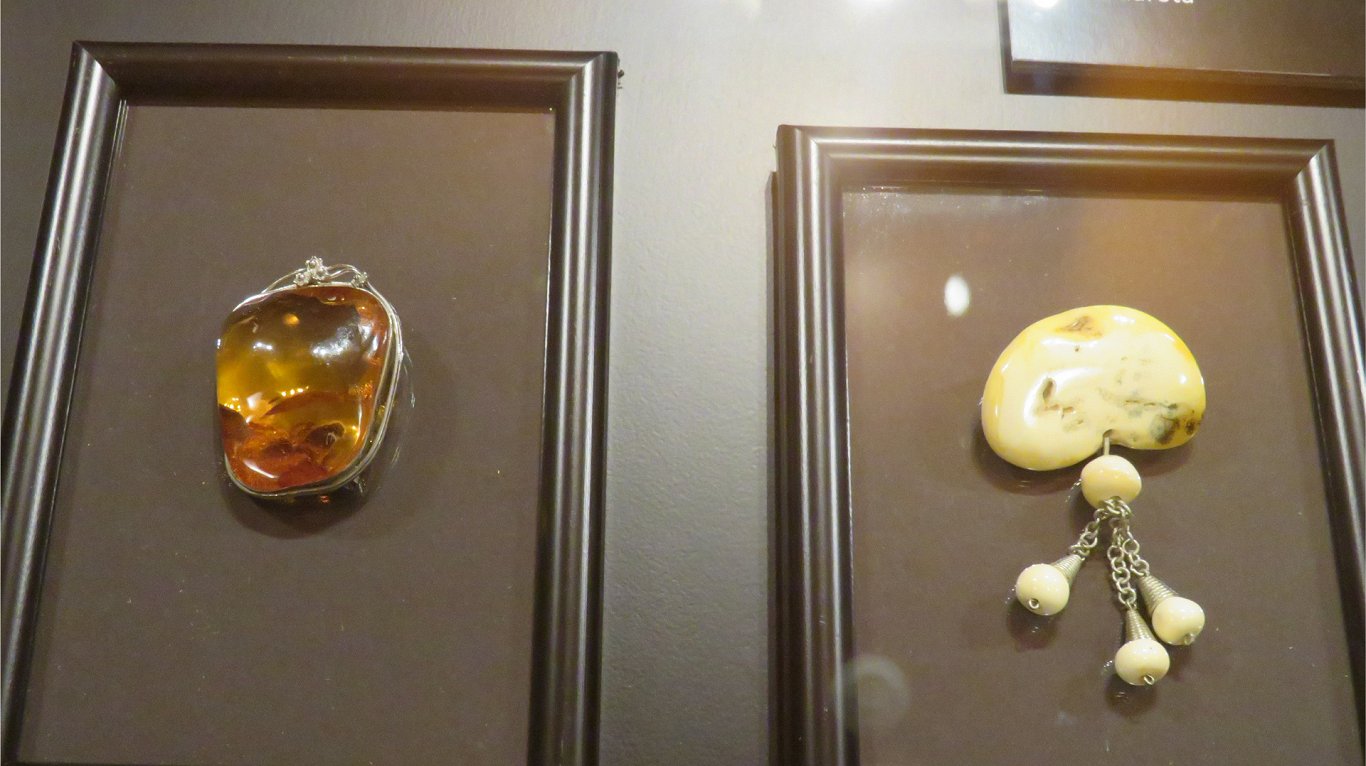Each piece of resin, frozen a million years ago, is unique, but when a real master begins to process it, the beauty of amber becomes visible to everyone.
For the first time, amber is mentioned in writing as an exporting good of Liepāja in 1542. Amber then was one of the most demanded goods. One of the five main “amber paths” started from the Baltic Sea and ended at the Black Sea, therefore, amber has been collected on the coast of the Baltic Sea ever since the first settlements.
Ornaments from amber are now a sign of Latvian identity. They were particularly popular in the second half of last century. In Liepāja, too, there was a tradition of amber jewelry in the Soviet era, many folk arts studios, and the ornaments created by these masters were highly demanded.
The Liepaja Museum stores more than 200 products of amber made by various masters, as well as 1038 amber samples with organic residue locked in a piece of amber.
The second part of the exhibition consists of large-format macro-photographs by Andris Zēgners, focusing on flies and other insects, plants that have been trapped in droplets of resin decades ago and remained there forever.

The exhibition "Dzintars tuvplānā" at the Liepāja Museum (Klāva Ukstiņa Street 7/9) is open until October 18. Entrance is free.




























